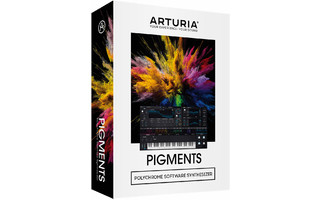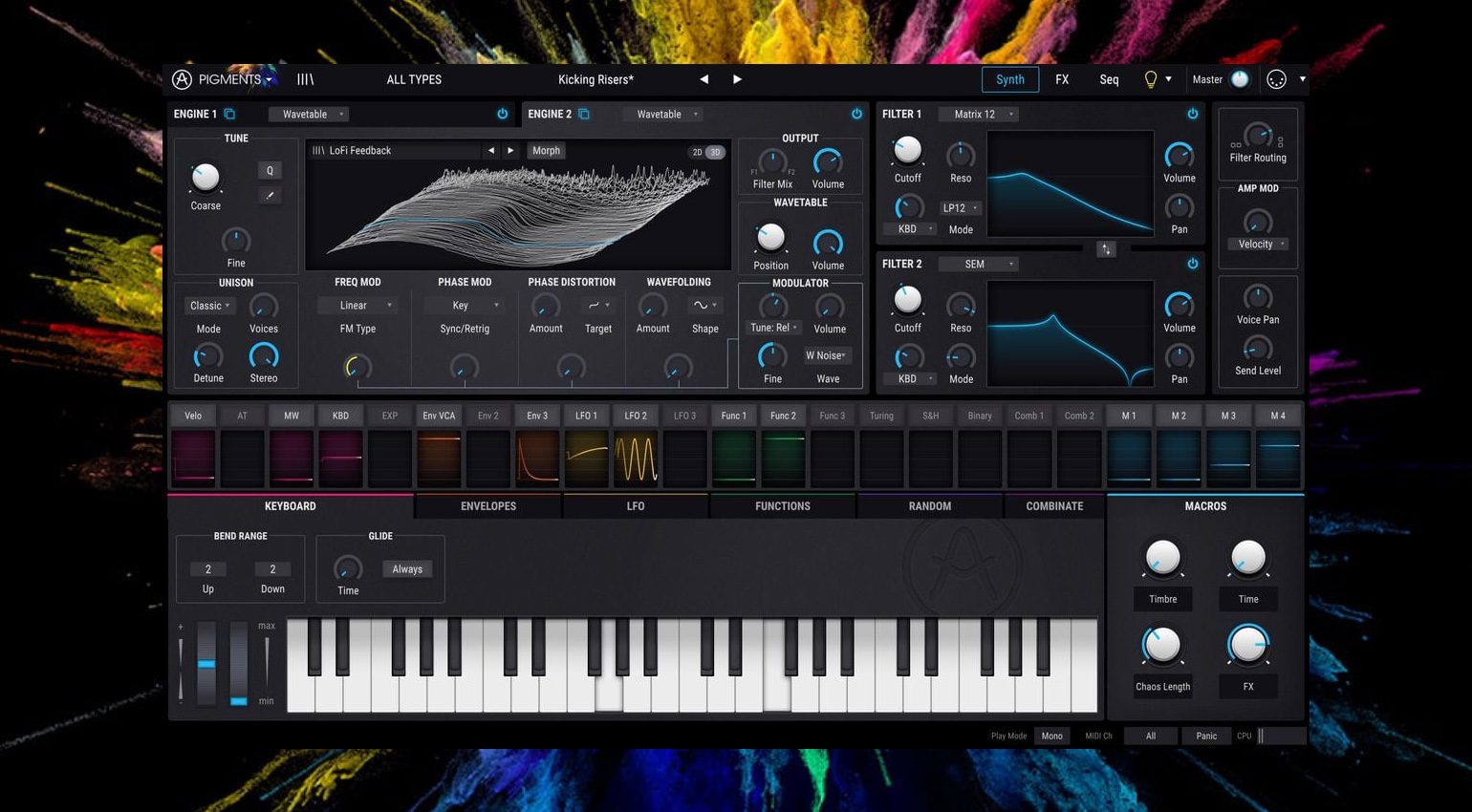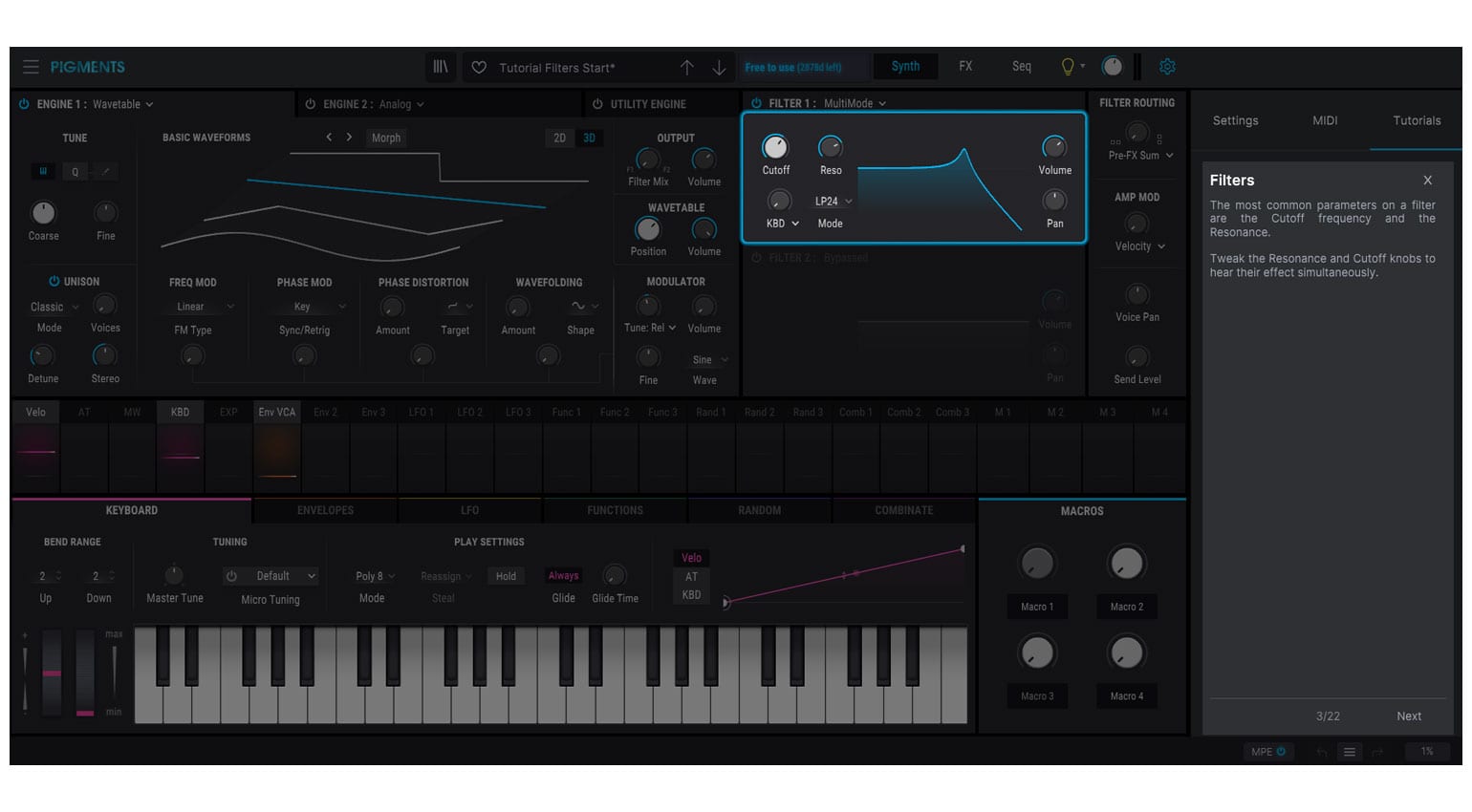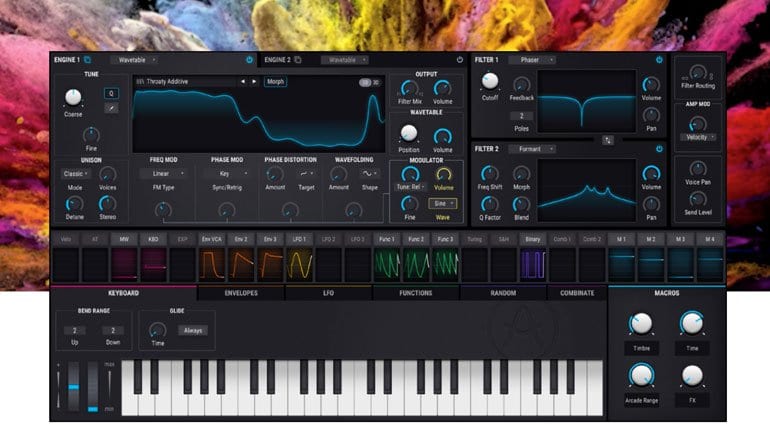

There’s a new tab here called “Tutorials”. Clicking on the Cog icon reveals the settings and MIDI mapping in a column on the right of Pigments. They’ve also revamped the filter routing so they can now be routed to either effects bus. The Jup-8 V4 Low-pass filter comes from their software emulation of the classic Roland Jupiter-8.

There are additional sound banks and some celebrity presets. They’ve added a ramp waveform to the virtual analog engine. There are a lot more wavetables knocking around bringing the total up to 164. All three tones have their own filter routing options. The Sub can be either a sine, triangle, ramp or square wave with pulse width modulation. There’s a whole bunch of different noise sound sources from digital white noise through to natural sounds like boiling water, birds or crowds and textures such as crackling vinyl. It appears as the third tab alongside the two sound engines. The Utility engine brings in a sub-bass oscillator and 2 noise sample layers. The display does a great job of visualising this and it’s a fin place to play. The new Harmonic Engine offers detailed additive synthesis where you get to play with up to 512 partials, dual morphing formant filters and lots of modulation.

Looks great in any case and they’ve lost none of the visual flair that sets Pigments apart. As far as I can tell they’ve flattened some knobs, turned blue indicators to white and increased the resolution of the waveform display. It feels smoother, fresher and more detailed although even with them side by side it’s not that obvious.

They’ve done something very subtle to the interface that you can’t quite put your finger on. Let’s check out what version 3 is bringing to the table. It has effects, sequencing and more modulation than is reasonable. Pigments is an immensely powerful software synthesizer that brings together a hybrid of different forms of synthesis and sound generation is a very visual package.


 0 kommentar(er)
0 kommentar(er)
